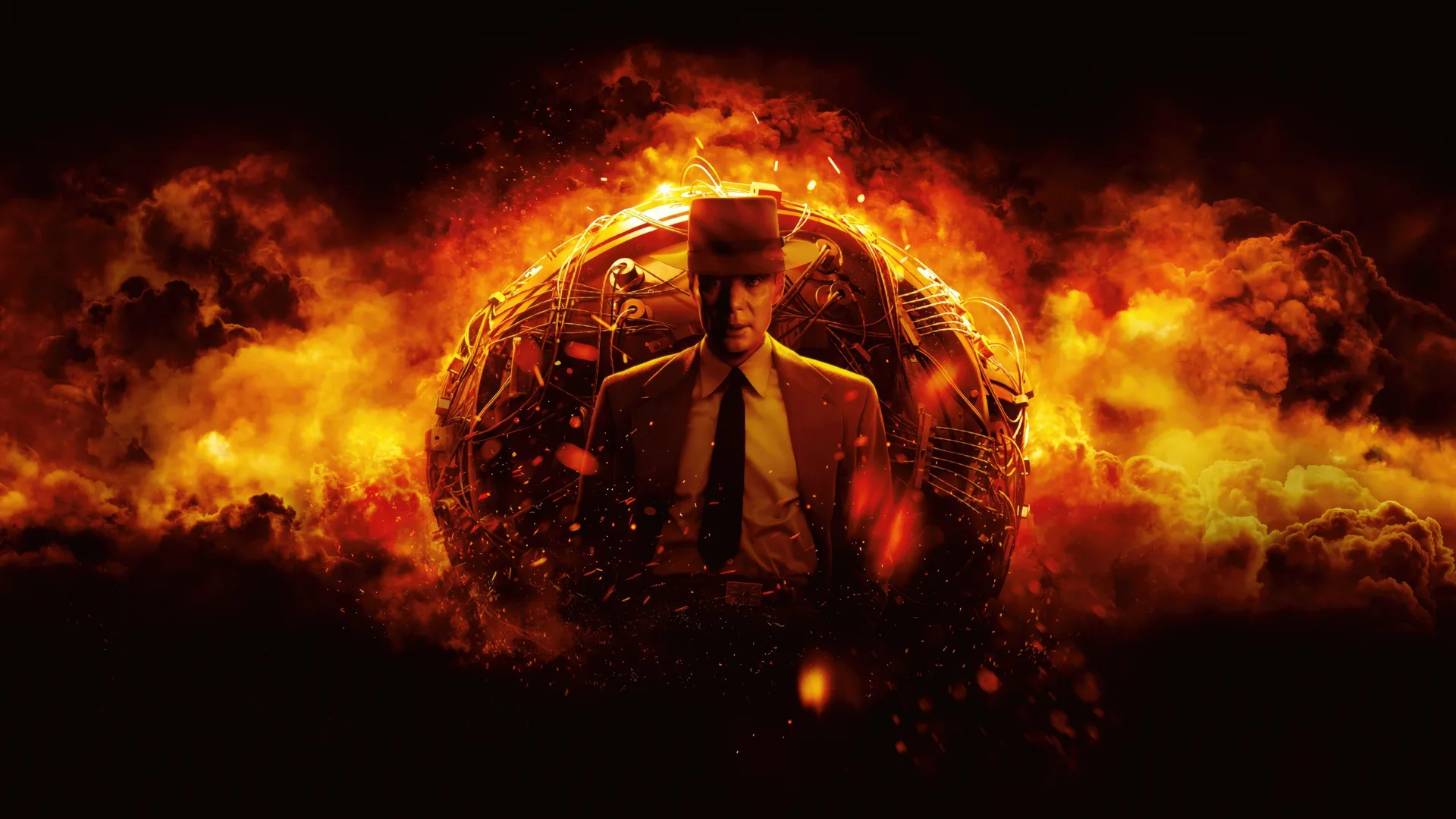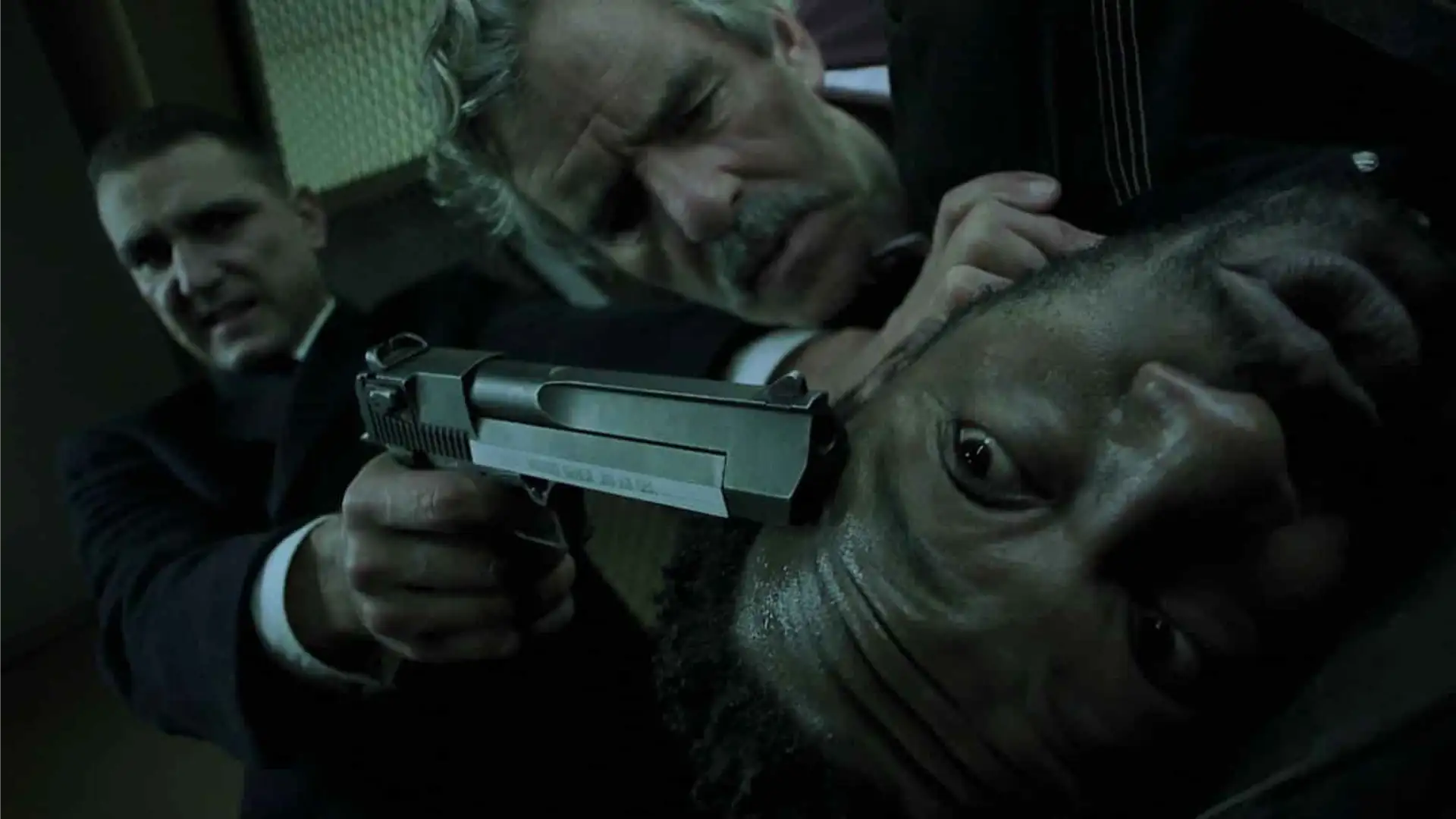Camera Sensor and Processor
Ok, Let’s start with the star of the show, the amazing 5.9K Full-Frame CMOS Sensor coupled with Canon’s DIGIC DV 7 image processor that supports Super 35mm and Super 16mm with a crop. DIGIC DV 7 is the latest processor developed by Canon and is the force behind many of the amazing features of Canon EOS C500 Mark II like high frame rate recording, Dual Pixel AutoFocus, Cinema Raw Light Recording, HDR output, electronic image stabilization, proxy recording (which I will talk about in a bit), and oversampling 5.9K processing. With this amazing combo placed in the camera, you can easily shoot in any standard aspect ratio you like, 16:9, 21:9, and 17:9.
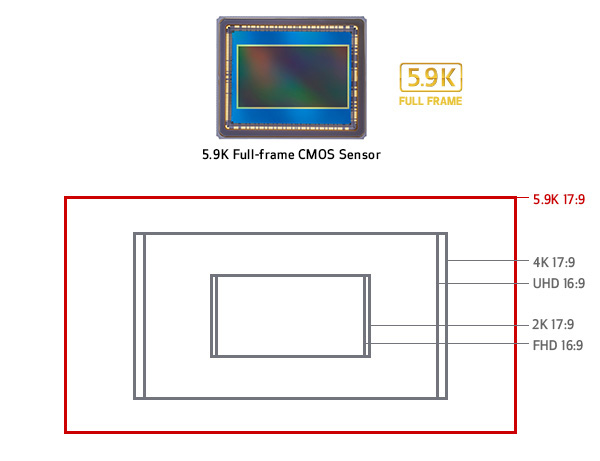
Storage, File Format, and Resolutions
The inclusion of DIGIC DV 7 also gives the camera the ability to record Cinema RAW Light directly to the CFexpress card. Canon EOS C500 Mark II has two CFexpress memory slots alongside an SD card slot. Of course, it does need that CFexpress speed for the sweet 5.9K footage that EOS C500 Mark II is going to shoot in RAW! This camera is going to be an amazing tool for any content creator in any field. The 5.9K resolution is reserved for the Cinema RAW Light format. Cinema RAW Light is an amazing format which will save files at 1/3 to 1/5 the size of Cinema RAW while keeping the data and quality almost untouched. But if you want to shoot in XF-AVC format then the top resolution is going to be 4K 10-Bit 4.2.2 which the camera captures internally. But the good news is that the 4K is the downsampling of 5.9K resolution, which means the end footage is a lot cleaner and free of noise!
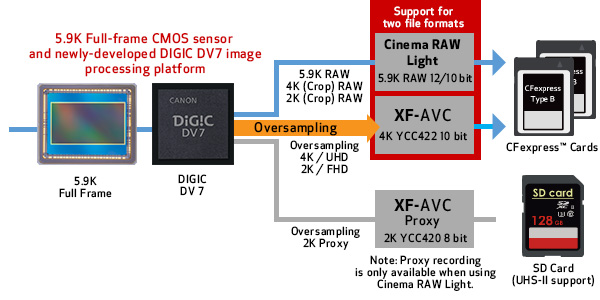
I personally will always shoot in the 6K mode because of the versatility it gives me later on in the post. Maybe, later on, I decided to zoom into my footage or feel like creating a panning effect. Well, 6K resolution will let me do that without the loss of quality. That is a neat feature that really gives me peace of mind when I’m framing my scene.
Framerate and Dynamic Range
Framerate wise, 5.9K RAW will let you have frame rates of up to 60 which is already great for many cases but if you need more, you can lower the resolution to 2K (cropped) and then have 120 FPS.
The other plus point that is almost tied to the sensor is the fact that apparently, this camera can handle up to 15+ stops of Dynamic Range! Let me know down in the comments if you would like to see that too.
Dual Pixel CMOS Autofocus and Lenses
Canon EOS C500 Mark II is a Cinema Camera that has Canon’s iconic Dual Pixel CMOS Autofocus! I mean yes, of course, every professional videographer always tries to use manual focusing because generally, it is more reliable. But still, having the feature and considering the amazing track record of Canon with this technology, it is a good feature to have in this new camera. Also, even if you prefer to go manual focus, it doesn’t mean you will not benefit from the feature. When doing the focusing manually, the camera will still feed you information based on its Dual Pixel CMOS AF and feed them to you on the screen so that your focusing will be more hassle-free.
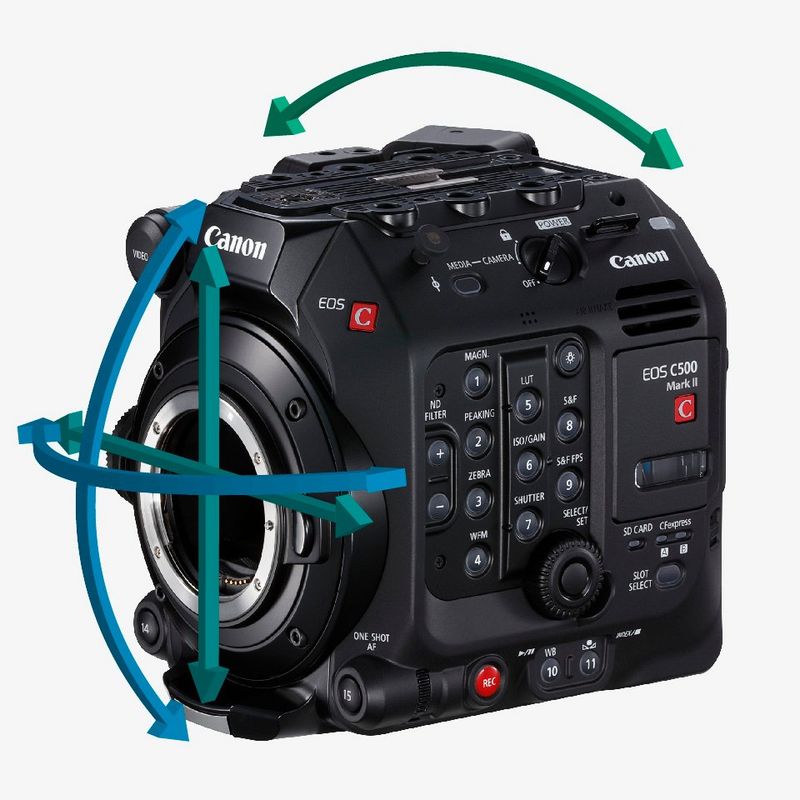
Talking about lenses, Canon EOS C500 Mark II is among the cinema cameras that support anamorphic lenses. Wide cinematic looks and oval bokeh particular to anamorphic glass is the promise of canon with EOS C500 Mark II!
C500 MKII also supports user changeable lens mounts. So technically this camera is compatible with EF, locking EF, and PL mounts. so any time you decide to change for example from an EF lens to a PL lens, all you’re gonna need is a screwdriver!
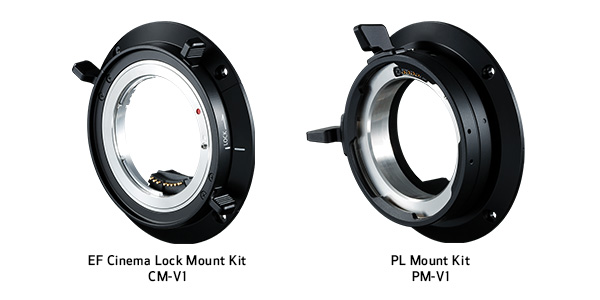
LOG Support
The other great new feature of this camera is the ability to add your own LUTs to the camera and then control them with dedicated buttons. Combine that with the addition of support for Canon Log 2 and 3 gamma. Of course, higher dynamic range, more highlight and shadow retention, and more flexibility in grading are among the main benefits of using Canon Log.
The difference between the Canon Log 2 and 3 is minimal. Canon Log 2 provides a larger dynamic range and image detail compared to Canon Log 3 which means more post-production flexibility and full dynamic range. But of course, it means more time spent on color correction and color grading. So if that portion of post-production is not a priority of yours, you can go with Canon Log 3 which has a slightly reduced dynamic range (14 stops) but saves you time in color grading and color correction. Add to that the ability to shoot 10-bit 4.2.2 footage. I don’t know why it took Canon so long to add this to its cinema cameras but it is always better late than never!
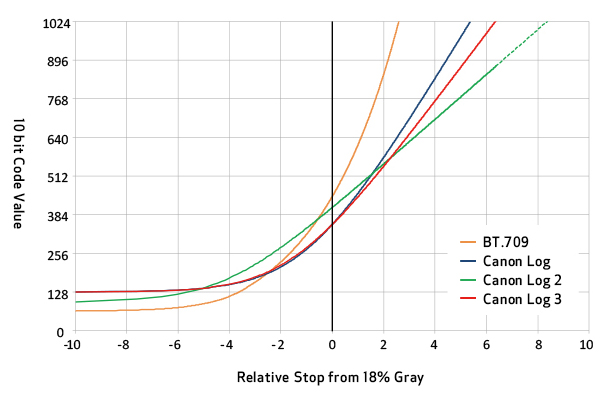
Modularity
Finally, the last thing that really makes me happy about Canon EOS C500 Mark II is its modularity. For example, the EVF can easily be added or removed by the user and that is very good news for those who constantly need to mount and dismount the camera on and from gimbals and stabilizers. On previous models, for example, Canon C200, the EVF was modular but the user was supposed to send the camera out to Cannon and they would do it. Imagine the inconvenience of that! Many preferred to just rent out another camera for the shoot cuz it really did not worth it, time-wise and money-wise. Of course, technically you CAN try to do it yourself but that is not something that I am brave enough to do! Doing so can damage the camera and I am almost certain that it voids the warranty.
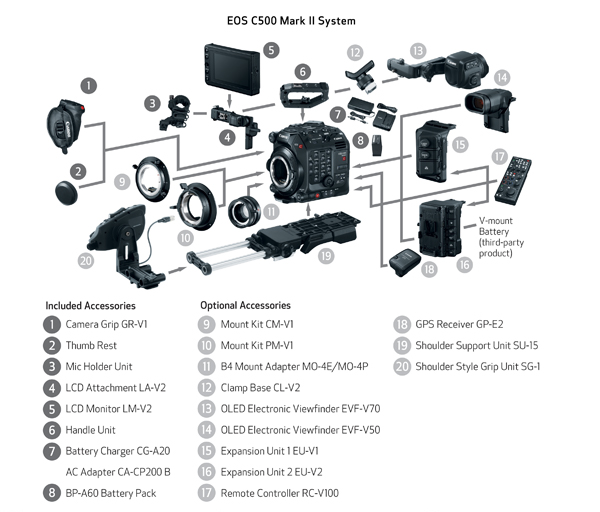
Not that those cameras are bad or anything but I believe they have a new competition to think about and competition is always good for consumers cuz that means better pricing and more features.

